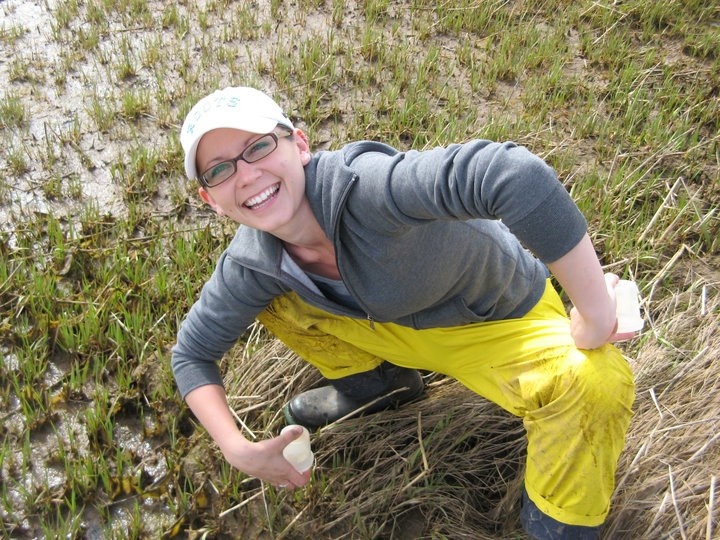Jen Frail‑Gauthier

Ph. D. Thesis
ECOLOGICAL INTERACTIONS AND GEOLOGICAL IMPLICATIONS OF FORAMINIFERA AND ASSOCIATED MEIOFAUNA IN TEMPERATE SALT MARSHES OF EASTERN CANADA
(PDF - 10 Mb)
Salt marshes are among the world’s most productive and valuable ecosystems, where most primary production terminates in detritus that supports abundant foraminifera. Salt marsh foraminifera are indicators of modern wetland health and used for sea-level analysis in the geological record. However, few studies have examined these foraminifera as living communities, including their role with meiofauna (“small food web”) in energy transfer to macrofauna. Better understanding would also aid in selection of foraminifera species for high-resolution paleo-sea-level and systems tract analyses. Biotic controls on the distribution and assemblages of foraminifera and meiofauna were studied for two cool-temperate salt marshes in Nova Scotia: mature, mesotidal Chezzetcook, and young, macrotidal Windsor. A laboratory mesocosm ran for two years and successfully represented Chezzetcook marsh, allowing year-round sampling. Foraminifera were more abundant than at comparable field sites, and vertical zones linked to tidal inundation accounted for the assemblage differences, with modulation from small-scale biotic interactions. Structural binary food webs constructed for each marsh had almost 300 taxa and 6000 feeding links in high-resolution webs. Low-resolution webs overemphasise the importance of vertebrates and undervalue the “small food web”. Overall, taxonomic resolution is a primary factor in interpreting salt-marsh trophic structure, and analysis should discriminate between high–mid and low marsh–mudflat zones. Stable isotopes (δ13C and δ15N) validated binary food web data and showed few significant differences in isotopic signatures and food-web properties between the marshes, despite large differences in their tidal range and geological age. The complexity of detritus-based food chains requires caution when using stable isotopes to interpret paleoenvironments by small isotope excursions. In vivo cultures and transmission electron microscopy of common agglutinated foraminifera confirm that these species are detritus-gathering, saprophagous bacterivores which outcompete co-occurring meiofauna in the middle–high marsh zones. Adhesion and cryptic mobility of these taxa may determine their value as precise sea level tracers and reduce post-mortem disturbance. Overall, the thesis results show that reworking of detritus in the “small food web” is a vital basic function of the ecosystem, supporting secondary productivity, biomass transfer, carbon storage, and confirming the value of agglutinated foraminifera as sensitive paleo-sea-level markers.
Keywords: salt marsh, foraminifera, meiofauna, food web, stable isotopes, laboratory mesocosm, paleoenvironment, sea level
Pages: 339
Supervisors: Daivd Scott / Martin Gibling



